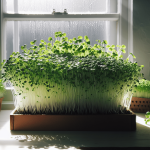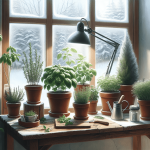This post may contain affiliate links. As an Amazon Associate, we may earn commissions from qualifying purchases.
Have you ever paused while walking through a garden or a park to admire the enchanting beauty of climbing plants? There’s something whimsical and almost magical about the way they twist, turn, and reach toward the sky, isn’t there? These wonderful plants can transform any ordinary space into a lush, green wonderland. But how do you get started, and equally important, how do you ensure they thrive? Let’s wander through this verdant topic, like ramblers wandering a garden path, and discover best practices for growing climbing plants.
Understanding Climbing Plants
To care for climbing plants, first, get to know them. They aren’t just ‘plants that climb’; they have specific features that allow them to ascend surfaces, from trellises to walls. Their variations and unique characteristics are vital to understanding what might suit your garden.
Types of Climbing Plants
Climbing plants are generally grouped into several types based on how they climb. Each has different needs and benefits, leading you to choose what’s perfect for your space.
-
Tendrils: These plants, like sweet peas and cucumbers, use small, wispy appendages to grip onto structures. They prefer thin supports like wires or nets.
-
Twining: This group, such as honeysuckle and morning glory, wraps their stems around supports. They do well with poles or thicker strands.
-
Clinging: With adventitious roots or adhesive pads, these plants (think ivy) can cling directly to walls and vertical surfaces themselves.
Choosing the Right Plant
Your plant selection depends on several factors, including climate and growing conditions. Some plants require specific altitudes, sunlight, or soil. Moreover, think about what you want from your climbers. Blooming vines for aesthetics, fruiting ones for a harvest, or dense foliage for privacy? Knowing your priorities can guide you to the right plant.
Preparing to Plant
Before planting your climbers, you’ve got to prepare the battlefield. Think of it as setting the stage for a play—everything has to be just right, from soil to sunlight, to ensure your plants steal the show.
Soil and Sunlight Requirements
Most climbers prefer well-draining soil, but soil composition can vary between types. For instance, wisteria likes slightly alkaline soil. Amend your garden bed with organic material like compost to enhance the soil quality, providing nourishment and ensuring good drainage.
Sunlight is another critical aspect. While many climbers love full sun, providing them with ample photosynthesis time, some, like hydrangeas, can tolerate shade. Evaluate your planting area throughout the day to understand the daily sun exposure.
Building Support Structures
Good fences make good neighbors, and for climbing plants, the right structures offer the best support. Decide between trellises, arbours, pergolas, or natural supports like trees. The choice may depend on your plant’s type and your aesthetic desires. Remember, sturdy and appropriately sized structures prevent frustrating mid-season collapses.

Planting Techniques
When the time is nigh to plant, roll up those sleeves. But wait—there are some specifics to ensure your efforts aren’t in vain.
Timing Your Planting
Climbing plants generally do best when planted during the spring, allowing them time to establish before the growing season takes off. However, some, like clematis, may do well in summer or fall, depending on the variety. Always check specific planting recommendations for your chosen plant type.
Proper Plant Placement
When planting, give your climbers adequate space from their support structures to allow for root growth and easy watering. Placing them about 12 inches away from the wall or support can help avoid a water spooning effect where moisture runs down onto the roots. This careful planning in placement plays a large part in establishing healthy and strong plants.
Caring for Climbing Plants
After planting, the real adventure begins as you care for your leafy companions. Your role is crucial, providing the best environment for flourishing amidst the elements.
Watering and Fertilizing
All plants enjoy a good drink, but climbing plants, especially, need consistent watering, particularly in dry spells. Water them thoroughly to encourage deep root systems but allow the soil to dry slightly between waterings to avoid root rot.
As for fertilizing, most climbers appreciate a balanced slow-release fertilizer applied during the growing season. This ensures they have the necessary nutrients to grow skyward with vitality. Over-fertilizing can result in excessive foliage growth at the expense of flowers or fruit, so moderation is key.
Pruning Techniques
It’s all well and good for a climber to shoot skyward, but without pruning, they can easily become tangled messes. Regular pruning helps manage growth and encourages more robust, healthier plants. Remove any dead or diseased growth, and trim back excessive foliage to promote good air circulation and light penetration. Each plant type might have its own pruning schedule, especially between flowering and non-flowering species.

Managing Pests and Diseases
No matter how careful you are, pests and diseases may find your garden. Don’t fret. Being proactive and prepared is half the battle.
Common Pests and Diseases
Aphids, spider mites, and caterpillars are frequent visitors to climbing plants. Solutions can range from inviting natural predators like ladybugs to introducing insecticidal soaps or neem oil. Similarly, diseases such as powdery mildew can attack, where maintaining airflow through pruning and using fungicidal sprays can help keep things under control.
Integrated Pest Management (IPM)
Utilize Integrated Pest Management strategies, prioritizing non-chemical controls and monitoring pest levels before resorting to pesticides. Create a balanced ecosystem where your climbers and beneficial insects work in harmony. A healthy garden begins with good cultural practices.
Season-Specific Care
While perennial climbers may stay with you year-round, their needs shift with the seasons, demanding your attentive care.
Spring and Summer Care
As your climbers burst into life come spring, ensure they get adequate water and nutrients. Support growth through proper mulching and ensure supports can handle their growing mass. Late summer might see you deadheading flowers to prolong blooming.
Autumn and Winter Care
Once autumn arrives, it’s time to consider pruning. For deciduous types, removing spent blooms and excess foliage prepares them for dormancy. When winter hits, think about additional protection like mulch or burlap for tender types. It’s also a good time to inspect and maintain supports, ensuring a strong return come spring.
Harnessing the Benefits
Climbing plants offer more than just beauty. They can provide privacy, shade, and even edible produce, making your garden not just verdant but functional and rewarding.
Creating Privacy Screens
If privacy is on your agenda, climbing plants like English ivy or trumpet vine can act as natural barriers. They’re great for screening unsightly fences or walls. Choose species that remain evergreen for year-round coverage.
Growing Edible Climbers
Want to add a culinary twist to your garden? Consider passionfruit, grapes, or kiwi—which provide delicious, homegrown fruit. These climbers offer dual benefits of shade and harvests that taste infinitely better when you’ve nurtured them yourself.
Conclusion
Planting and nurturing climbing plants can be a gratifying process, turning any space into a slice of verdant heaven. It may take a bit of effort, love, and diligence, but the surreal walls of green stretching up, embellished with blooms or fruit, are more than worth it. By ensuring you choose the right plants, structure their growth with care, and maintain their health through thoughtful practices, you’re not just growing plants; you’re sculpting living art. So there you are, already one step closer to creating that dream garden, with lush climbers deftly woven into your living world—a delightful green tapestry crafted by your own hands.








